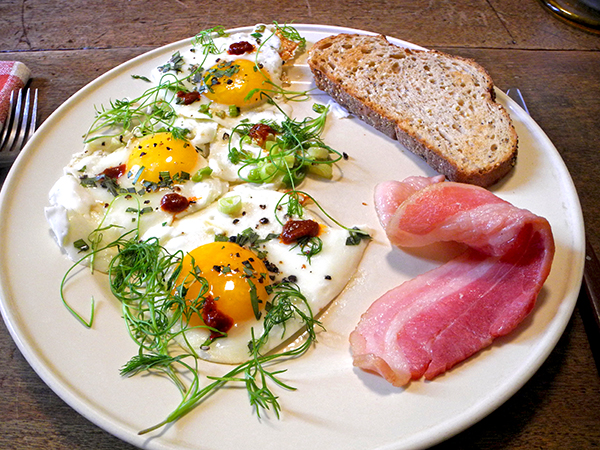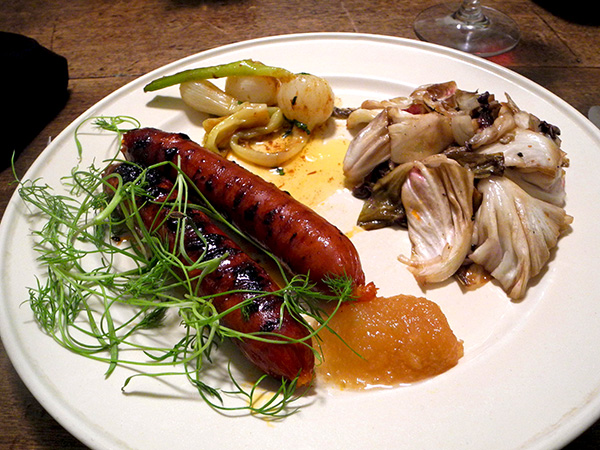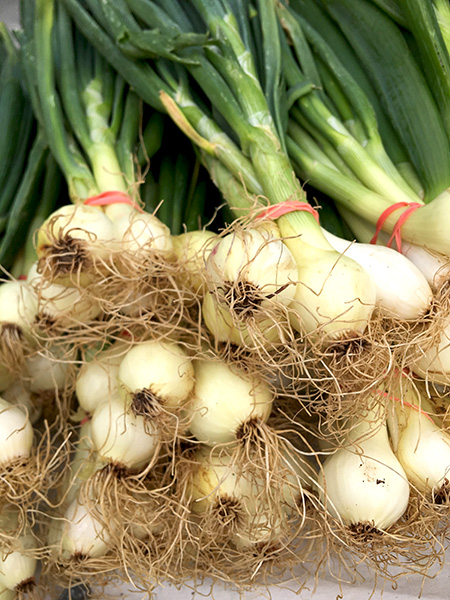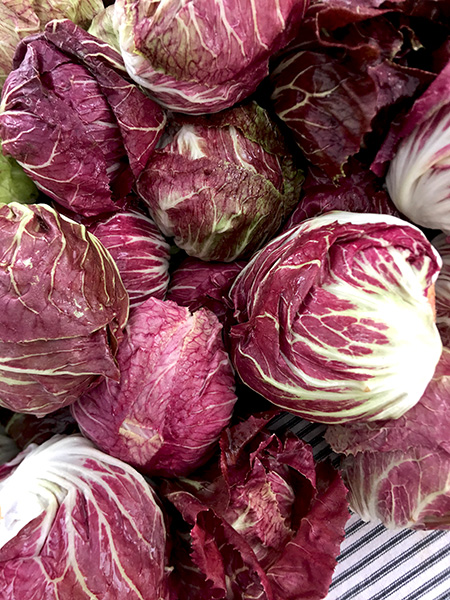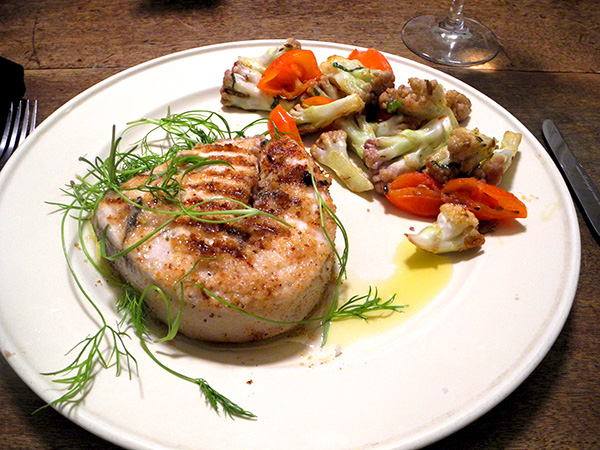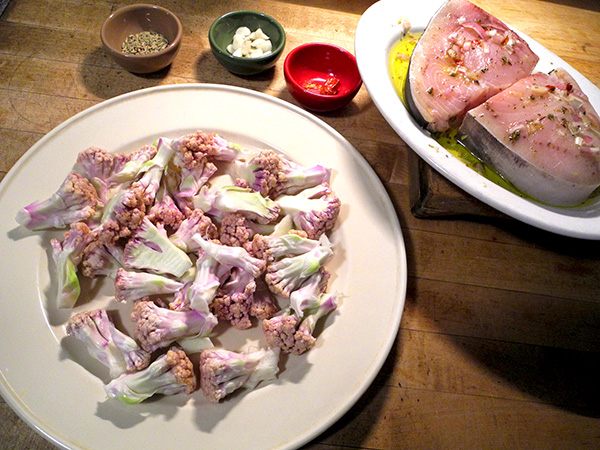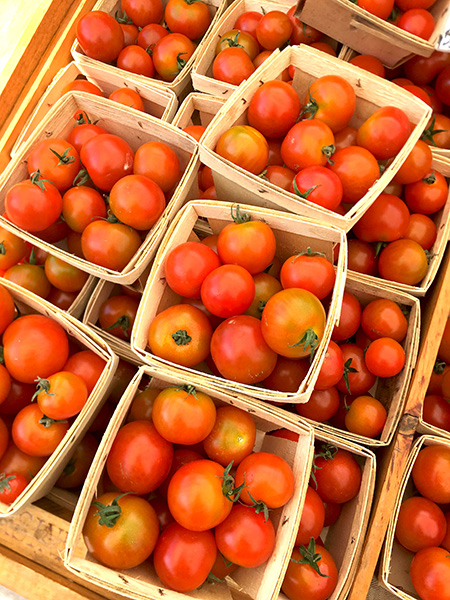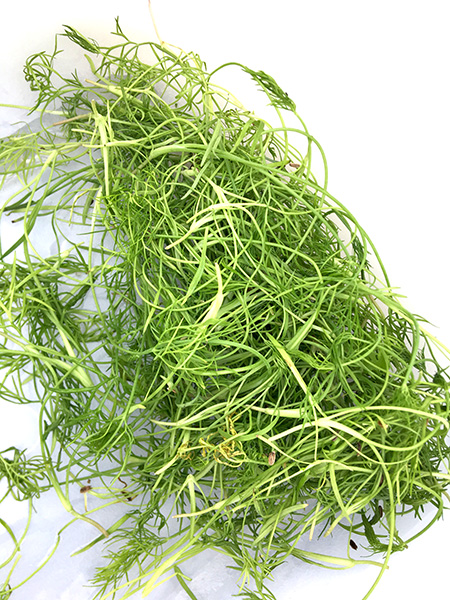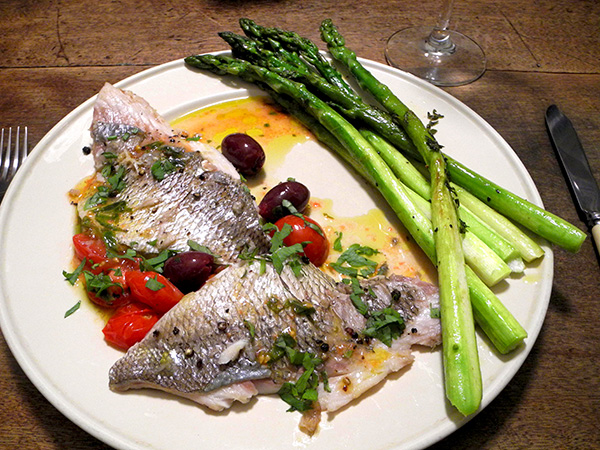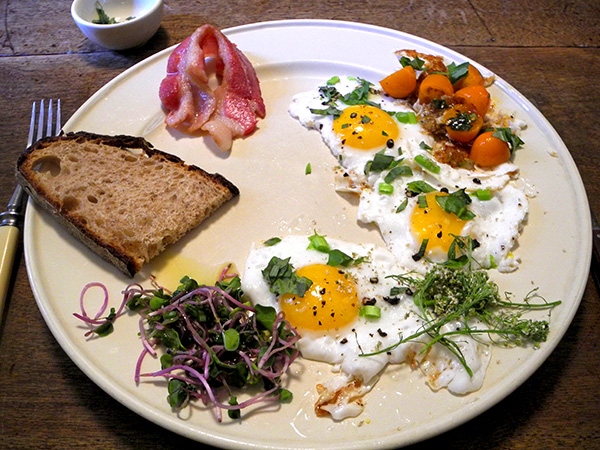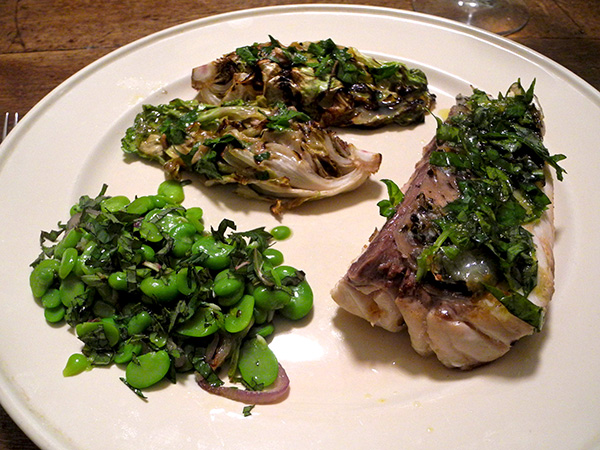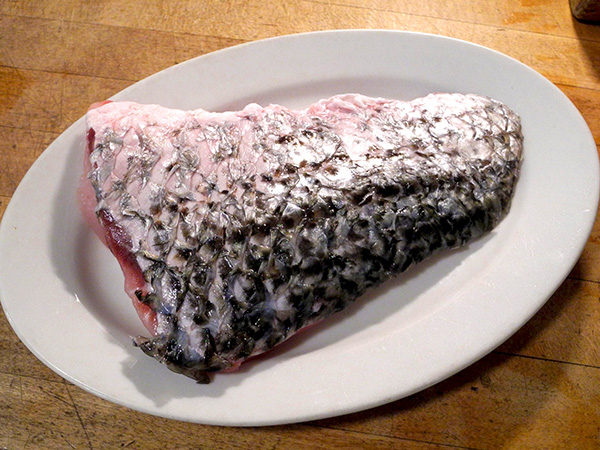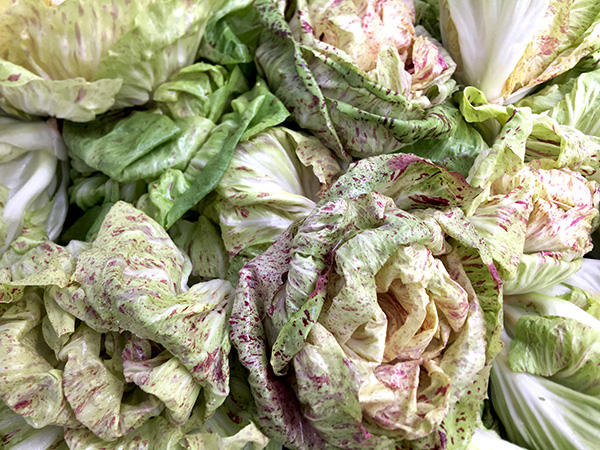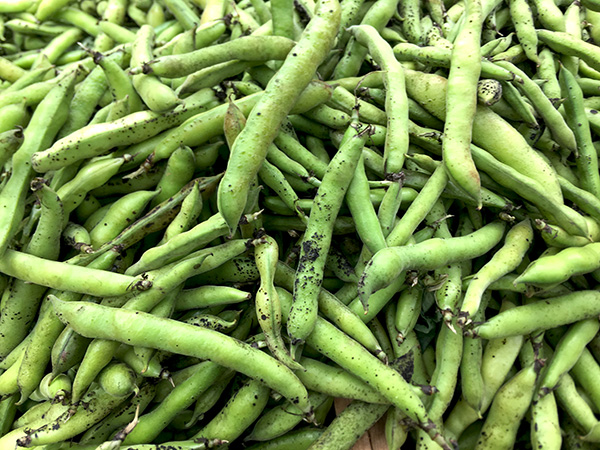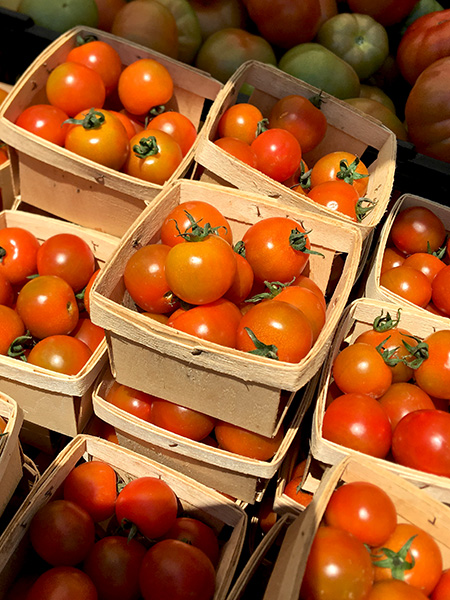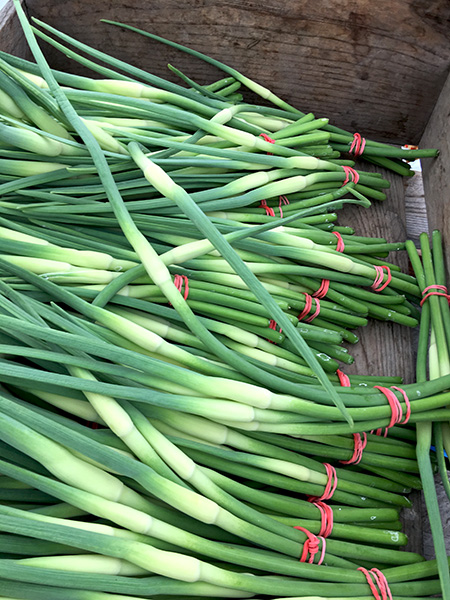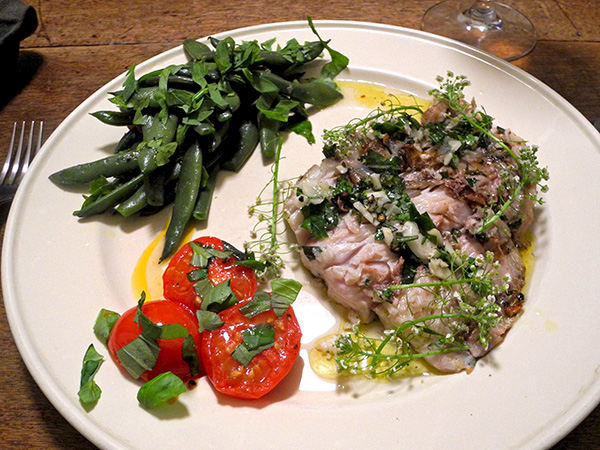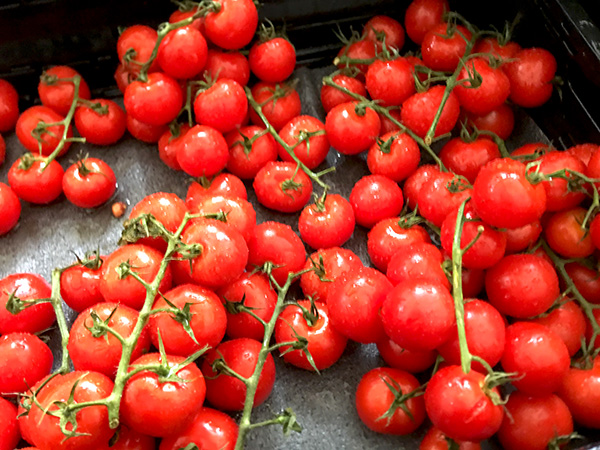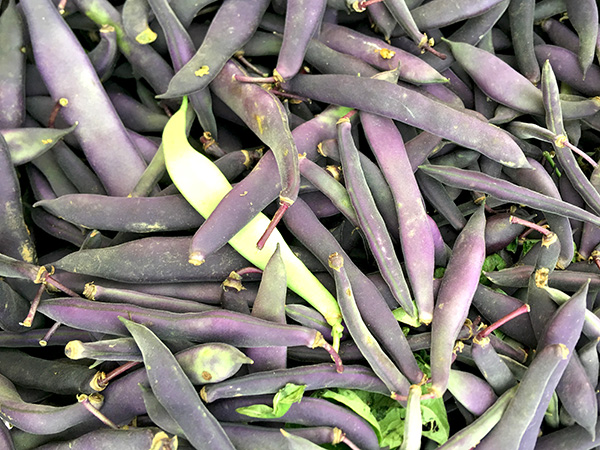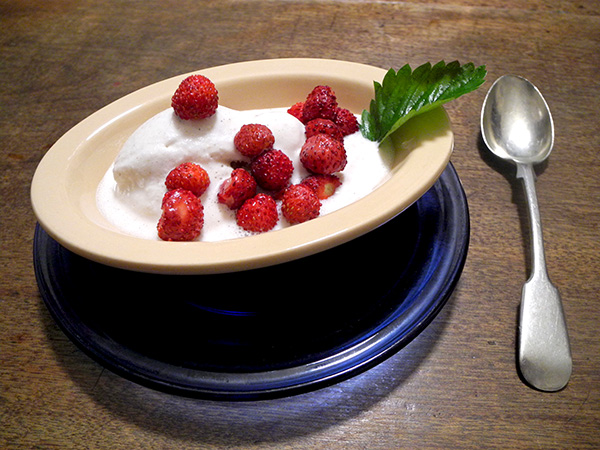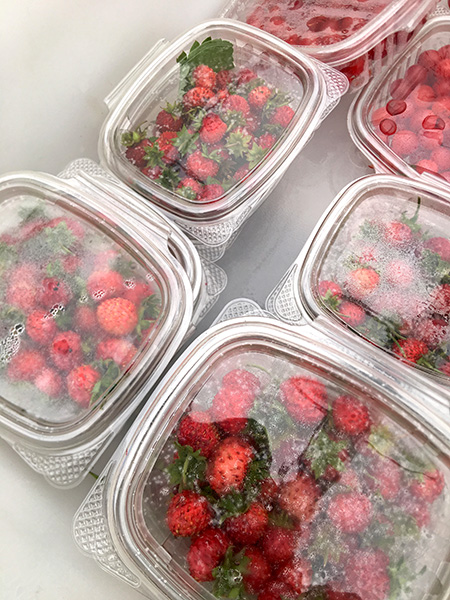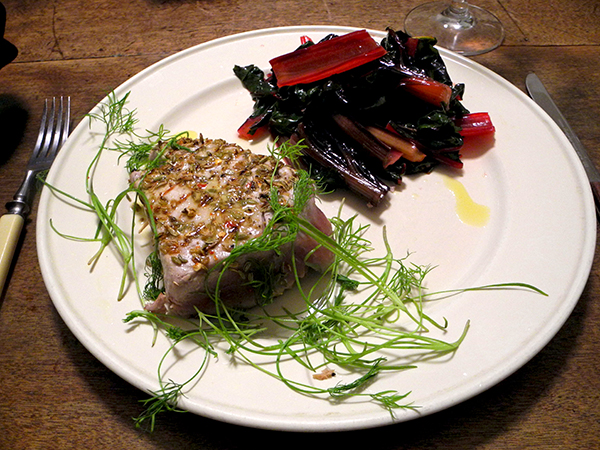
Because I was dealing with a mild fever yesterday I had stayed out of the kitchen that night (we ordered in from the Flatiron Tacombi), when the fever subsided today I was anxious to jump back into my work station, although I also thought I should still take it pretty easy.
During the afternoon I didn’t feel up to the longer run to the greenmarket in Union Square, and I knew I didn’t really need much in the way of supplies, so I decided to visit the small sidewalk market which is set up each Saturday, except in the winter months, just one block west from our door
I was able to get everything I needed for for an excellent meal, plus everything I didn’t yet have for a serious Sunday breakfast the following morning.
For Saturday’s dinner I opted for a couple of tuna steaks and a single side vegetable, knowing that such a meal could be put onto the table in about 15 minutes.
Moreover, no carving or boning would be necessary at any stage, from counter to table.
But this meal has virtue independent of all considerations of time, effort, shopping distance – or cost: It’s delicious. It’s also pretty inexpensive: Aside from the strands of a micro green, and the few staples involved, the total cost was under $20 for 2 people (it would have been under $10 had I used a less precious fish, say an equally-delicious 12 ounces of squid).
Incidentally, the vegetable was a gorgeous rainbow chard from Echo Creek Farm, and it may have been the best beta vulgaris, subspecies cicla, I have ever tasted, and I’ve enjoyed a lot of that vegetable, both rainbow and not.
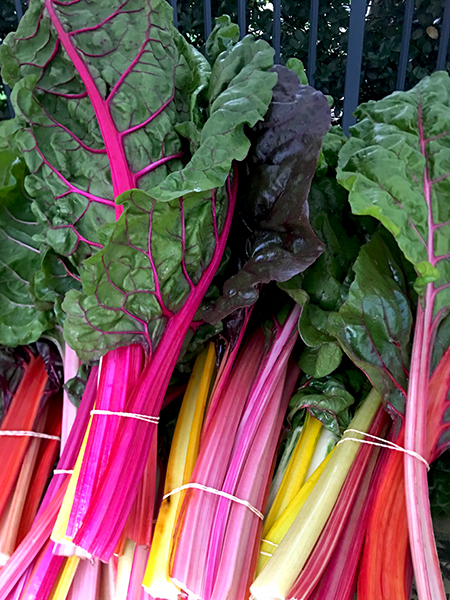
- two 7-ounce tuna steaks from American Pride Seafood Company in Chelsea’s Down to Earth Farmers Market on 23rd Street, rubbed, tops and bottoms, with a mixture of a heaping tablespoon of wonderful dry Sicilian fennel seed from Buon Italia and a little crushed dried crushed dried Sicilian pepperoncino, also from Buon Italia, the two having been ground together with mortar and pestle, the tuna surfaces also seasoned with salt and freshly-ground pepper, before they were pan-grilled for only a little more than a minute or so on each side and finished with both a good squeeze of the juice of an organic lemon from Whole Food Market, aranged on the plates and garnished with a bit of micro fennel from Windfall Farms, drizzled with a bit of olive oil
- one bunch of rainbow chard from Echo Creek Farm, in Salem, NY, from their stall in Chelsea’s Down to Earth Farmers Market on West 23rd Street, wilted in a little olive oil in which 2 halved Christopher Garlic Ranch garlic cloves from Eataly had been heated, finished with a squeeze of juice of an organic lemon from Whole Foods Market, arranged on the plates and drizzled with a little olive oil
- the wine was a California (Lodi) rosé, Karen Birmingham Rosé Lodi 2016, from Naked Wines
- the music was Vivaldi’s 1724 opera, ‘Il Giustino’, with Alan Curtis conducting the ensemble, Il Complesso Barocco
